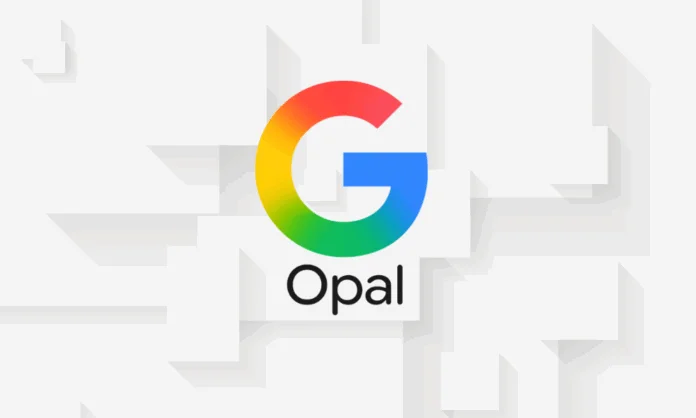Whether you are a techie or not, you’d have at least some idea of how much code goes into making an app.
What if I tell you that you can make apps with just plain English language prompts? Well, to help you with that, Google Labs have built an automation tool Opal which will let you build AI-powered real apps in under a minute that are also shareable. Awesome, right?
So, whether you are a regular business user, marketer or a creator, this tool is just for you.
Here, we will try to give you insights on how google opal is changing the app building workflow.
Google Opal: What Is It?
Google Labs built the Google Opal, and it is a no-code automation tool that lets you build AI-powered mini apps using just English language. Don’t know the code? That’s okay. Just describe what you want, and Opal will build it for you.
How Does Google Opal Work?
Opal ties the AI prompts together and models it like Gemini and portrays in a straightforward visual editor. You can start off by telling the required functionality of an app in simple language. After this, Opal will translate the descriptions provided by you into perceptible workflows.
They consist of correlated steps where each represents a specified activity. Here, it can include your inputs, steps by AI model and output. Visual editor permits you – the user, to see and alter each step while giving control over application’s logic without you having to write the code.
It supports two different methods of interaction – optical (visual) and communicative.
In Optical mode – Using a drag and drop interface, you can straightaway manage and maneuver the workflow by either adding, clearing or modifying the steps the way you want.
In Communicative/Conversational mode – You can describe the modifications in natural language which will prompt Opal to modify the workflow accordingly.
When the application is complete, Opal provides a link that you can share with others which allows them access to use the mini app from their google accounts. This attribute facilitates the testing and collaboration amongst the users. Opal also provides you with templates to help you start, which you can use as they are or even customize them as per your desire.
Why Does Google Opal Matter?
The appeal of the AI-powered app creators is understandable. It allows access to everyone who wants to create, as it doesn’t require the user to have the knowledge of coding. But as it is true for pretty much everything in the world, it also has risks. Developers have discussed concerns about overdependence on AI, instancing bugs and consequential aftermath while having faced an instance where AI involuntarily erased a database.
The way we build software is undeniably transforming. If you’re contemplating an idea for a startup or stimulating your creative brain, Google Opal offers a straightforward way to explore development of apps, powered by AI.
Comparison Between Google Opal and Regular App Development
| Characteristics | Regular Development | Google Opal |
| Time to gain insights | Months, may be years | Minutes |
| Skills Required | Programming, frameworks | Natural language communication |
| Time to develop the app | Weeks, may be months | Minutes, may be hours |
| Expense | High | Free (beta) |
| Association | Skilled team needed | Anybody can collaborate |
Question I had in My Mind – Are Google Opal Applications Secure?
Google Opal benefits under Google’s enterprise-grade security measures.
Data Encryption: The data is encrypted in transit and at rest
Access: Control with authorizations and authentication
Security of the Infrastructure: The security standards are according to the Google Cloud Platform’s security standards
Compliances: It is certified under ISO 27001 and other appropriate required standards
Benefits That Make Google Opal Futuristic
Adaptability – It is created on Google’s strong infrastructure; it can adapt itself according to the scale of the projects from individual to organization-wide solutions.
Lucrativeness – The regular traditional development cycles and developers that are needed in it are eliminated which drastically reduces the total cost of designing and building the applications.
Market Time – As the ideas can be put into working function quickly in minutes instead of weeks or months, it helps with faster testing and exploration of various business concepts.
Incorporation of AI – Google’s advanced and innovative AI models like Gemini and Veo are responsible for adding capabilities that would need and expect considerable amount of expertise to implement and design the applications traditionally.
Convenience – In the traditional systems there are constraints to the entry, but in this tool, those constraints are removed, and hence it has enabled anyone to build applications using English language instructions including business professionals, creators and entrepreneurs as well.
Looking Forward with Google Opal
We can foresee the coming development in Google Opal’s features, capabilities, and incorporation choices as it upgrades from beta to full release. The platform’s ascendancy is expected to project additional funding for no-code technologies and quicken the shift in software development from a specialized skill to a general one. Building is the best way to totally understand Google Opal’s latent. The platform offers an exclusive way to realize your ideas, whether you’re looking to automate your business procedures, produce instructional materials, or develop innovative applications.
Learning to use platforms like Google Opal has become paramount for people, professionals and organizations trying to stay competitive in a world that is becoming increasingly digital. Those who can promptly convert concepts into functional solutions will have a better grip on the AI future, and it offers the means to ensure that everyone can be a part of it.
For more informative blogs, visit YourTechDiet!
Recommended For You:
Introducing Gemma 3n: Google’s Latest Open Model for On-Device AI

